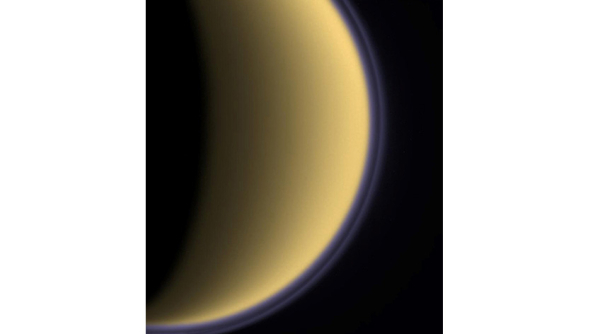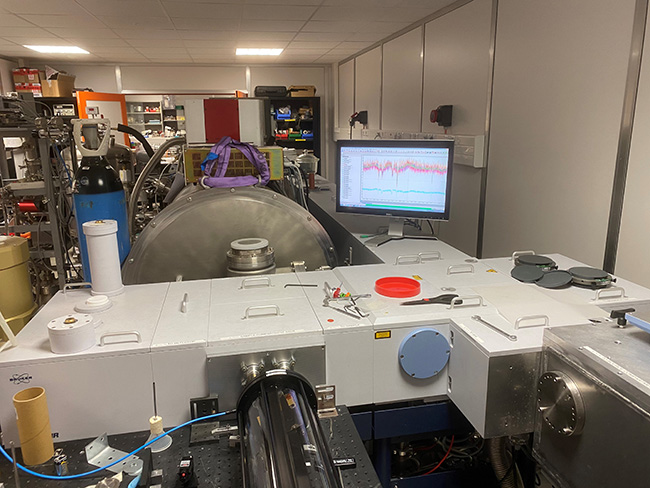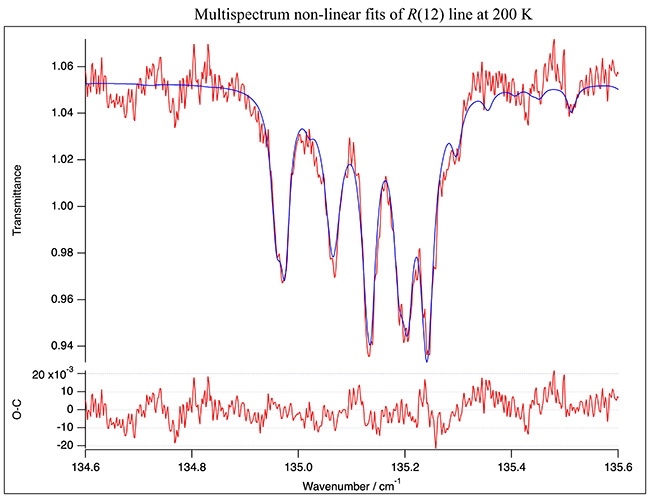Methane is a particularly interesting molecule for studying (exo-) planetary atmospheres, especially that of Saturn's moon Titan, which has a thick atmosphere. Detailed analysis of the radiation absorbed by methane in the far-infrared wavelength range, at very low temperatures (of the order of -180°C), is therefore of fundamental importance for better understanding and characterizing Titan's environment, with a view to NASA's next mission, Dragonfly, which will be equipped with a drone.
Molecules (and atoms) emit and absorb radiation of various wavelengths, which are "signatures" of their composition and physico-chemical properties. For a molecule to absorb infrared (IR) radiation, the electrical charges of its constituent atoms must not be uniformly distributed throughout the molecular assembly - in other words, it must possess a dipole moment. The methane molecule (CH4) has no permanent dipole moment. Therefore, to a first approximation, it cannot absorb infrared radiation. Nevertheless, when the molecule is in excited rotational or vibrational states, a very small dipole moment results from centrifugal or vibrational deformations, and this induces very weak absorptions in the IR range, between 60 and 200 µm wavelength.
The study of the IR spectrum (recording of all the "lines" each corresponding to the absorption of an IR wavelength by the molecule under study) of methane at different pressures, low temperatures and in a gaseous mixture (in this case, N2 gas) is, despite the weakness of the absorptions, of major importance in the study of the atmosphere of Titan, the largest satellite of the giant planet Saturn. These are the conditions existing within this atmosphere, composed of around 96% N2 and 4% CH4. Such an experiment makes it possible to define the parameters of spectroscopic line broadening, which are essential for understanding atmospheric models. Scientists need to accurately characterize this atmosphere in the near future, with a view to various future missions, including Dragonfly, NASA's drone-based exploration mission. They need a bank of reference spectra with which to compare the data recorded during this type of space mission, as was the case for the Cassini-Huygens mission.

Figure 1: Photo of Titan, showing its thick atmosphere.
The synchrotron is an instrument that produces extremely brilliant light over a wide range of the electromagnetic spectrum, particularly in the far infrared; this part of the electromagnetic radiation is available on SOLEIL's AILES beamline. Furthermore, for IR absorption measurements at very low temperatures (down to - 150°C, conditions found in Titan's atmosphere, for example), one of the AILES instruments can perform absorption measurements over a very long wavelength, the IR beam going back and forth in the measurement cell. This long length compensates for the small number of molecules to be studied (a gaseous medium, and therefore very dilute), and produces spectra with more intense absorption lines. This is an invaluable asset for observing spectral lines that are generally unobservable with other sources. This was used to observe the IR absorptions of methane mixed with nitrogen.

Figure 2: The AILES beamline makes it possible to record spectra that would otherwise be very difficult to obtain, thanks to the high brilliance of the IR light produced by the synchrotron and the long path taken by the IR beam in the absorption measurement cell. This photo shows the Bruker spectrometer used for the experiment.
The work carried out by teams from Laboratoire Interdisciplinaire Carnot de Bourgogne, Université Libre de Bruxelles, LISA and LESIA has made it possible to measure the values of the broadening coefficients, as well as those of the temperature dependence, of methane absorption lines for which the existing data in the databases were previously only extrapolations from lines measured in other regions of the methane absorption spectral spectrum.

Figure 3: Comparison between a spectrum of IR absorption by the methane molecule recorded on AILES (red) and modelled by calculations (blue), as well as the differences between the two (fit residuals, bottom red curve).
These results are an invaluable tool enabling astronomers to accurately determine the methane concentration profile in Titan's atmosphere.
